TfNSW Road User Handbook
Road Safety is a shared responsibility. Know the rules you must follow to keep yourself and other road users safe
The Road User Handbook covers the main rules you need to know to drive legally and safely on NSW roads. The handbook helps you check the rules, understand legal responsibilities, and learn safe driving behaviour.
Read the Road User Handbook (PDF, 7MB) online or purchase a copy from your local Service NSW Centre. If you need the Road User Handbook in other languages, you can access road rules and safety information in 66 languages using the language translation function provided on the website.
The handbook is written in plain, easy to understand language, so it is not a detailed version of road law. To access the current and complete set of Road Rules, Visit the NSW legislation website.
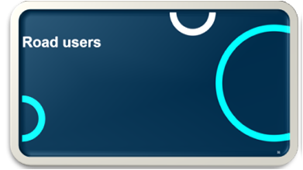
All road users in NSW should be able to arrive safely at their destinations.
Top 10 misunderstood road rules in NSW
Motorists may also benefit from reviewing the top 10 misunderstood road rules by Transport for NSW.
Who is a road user? (Back to top)
Everyone who uses the roads to drive, ride or walk has a responsibility to share the road with others. Road users include drivers, passengers, and vulnerable road users such as, motorcyclists, bicycle riders and pedestrians
-
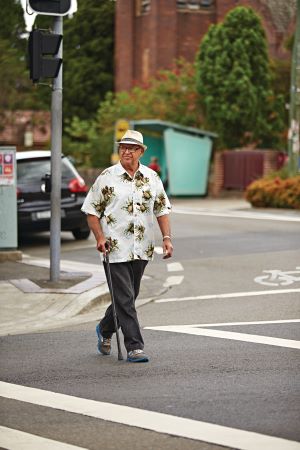
Tips for pedestrians
It’s easy to become complacent about safety, especially on a familiar route such as on your way to or from work. Taking risks and not being mindful on the roads can have serious consequences. It’s important to Stop. Look. Think. Cross if safe.
Always use pedestrian crossings, it’s the safest way to cross the road.
If there is no pedestrian crossing:
When there is no pedestrian crossing, use these tips to cross safely:
STOP
- Before you cross the road stop at a safe distance back from the kerb.
LOOK
- Look both ways for approaching vehicles before you cross the road. As you cross keep looking both ways and checking until safely across. Just because someone else decides to cross, doesn’t mean it’s safe for you.
THINK
- Is there a pedestrian crossing close by that you could use
- Think about whether it is a safe place to cross
- Never assume that an approaching vehicle can see you, or will stop for you – wait until all vehicles have passed before you consider stepping off the kerb
- Make sure you can clearly see vehicles coming from both directions and make sure drivers can also see you.
CROSS IF SAFE
- Remember to always choose a safe place to cross the road:
- Avoid crossing between parked cars or at the front or back of buses and large vehicles
- Avoid crossing at a crest of a hill or a bend in the road making it difficult to see approaching traffic and to be seen by drivers.
- Only cross if the road is clear of traffic.
-
TfNSW crash data shows that in the five (5) year period between January 2017 and December 2021, senior drivers/passenger road users were overrepresented with seven (7) fatalities within the City of Parramatta Council Local Government Area. This included five (5) motor vehicle driver fatalities in the 60+ age group and two (2) motor vehicle passenger fatalities in the 70+ age group.
In the same period, senior pedestrians were overrepresented with four (4) fatalities, with one (1) fatality was in the 60-69 age group and three (3) in the 70+ age group.On the Road 65Plus
Whether you’re experiencing changes in your mobility or planning for the future,
Transport for NSW’s On the road 65Plus will help you stay independent and safe. On the road 65Plus has advice and safety tips for people in our community aged 65 or over to help make safer choices when driving, riding, walking, using a mobility scooter or catching public transport.TfNSW explain the NSW older driver licensing system, including information for those who want to transition from full-time driving to other transport options.
To find out more about On the Road 65+ go to TfNSW’s website
-
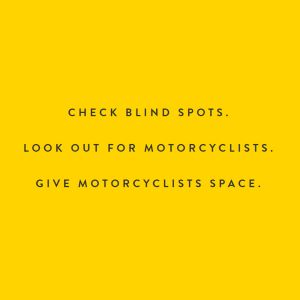
TfNSW crash data shows that in the five (5) year period between January 2017 and December 2021, motorcycle riders had the second highest fatalities of all road user groups with eight (8) fatalities within the City of Parramatta Council Local Government Area.

Reduce risks for a safer ride
Motorcycle riders are more exposed and risk serious injuries if they are in a crash. Improve your safety by visiting
- The MotoCAP website with product ratings to help choose the right helmets, jackets, pants and gloves for the best protection and comfort when your ride
- The Ride to Live website with hazard tests to check your responses to different risks, interactive maps of popular riding routes, and safe riding tips
- The Ride to Live campaign focusing on the risks that motorcyclists face on the road and how to best manage them
By choosing safer helmets and riding gear, motorcyclists can ensure they have the best protection. Riders should also:
- Be aware that Motorcycle lane filtering laws apply in NSW
- Read TfNSW’s safe riding tips to help avoid hazards
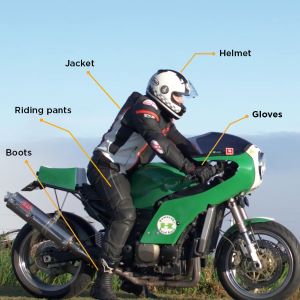
-
Younger and novice drivers face many challenges when learning the complex task of driving a vehicle. With their relative inexperience, they also face a higher risk of being involved in a crash.
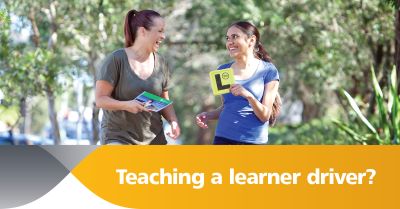
Supervised driving
All learner drivers must be supervised by someone with a full (unrestricted) driver licence. Learner drivers can have their licence suspended if they drive unsupervised. Learner drivers under 25 years must complete 120 hours of supervised driving (including 20 hours at night).
Graduated licensing schemes are one of the most effective ways to reduce youth road trauma. These evidence based schemes help reduce the number of young drivers in crashes. They provide a staged approach to driver licensing and reduce the impact of risk taking behaviour associated with younger drivers.
What is the Graduated Licensing Scheme?

The Graduated Licensing Scheme (GLS) is the process you follow to go from your learner driver licence through to your full licence. Through three stages, experience, restrictions, conditions and tests, the GLS prepares new drivers to be safe and low risk drivers.Licence conditions explains the NSW Graduated Licensing Scheme process, as well as some of the restrictions that apply to learner and P-plate drivers.
The Safer Drivers Course helps learner drivers identify risks on the roads. Speed management, hazard awareness and safe following distances are some of the strategies in the course’s theoretical and practical sessions, which earn learner drivers 20 hours of log-book credit.
-
Bicycle riding has increased in popularity, especially among recreational and commuter riders, as well as food delivery riders across metro areas. Bicycle riders have less protection and are at a significantly greater risk of death or serious injury if involved in a crash.
Staying Safe
Bicycle riders have the same rights and responsibilities as motorists, which is why it’s important that both motorists and bicycle riders look out for each other.
By understanding and following the road rules, bicycle riders can improve their safety as well as that of other road users. TfNSW tips for safe riding can also help bicycle riders better share the roads and avoid danger. It’s also important for drivers to understand how to share the road with bicycle riders to ensure everyone has a safe journey.
TfNSW Share the road campaign reminds motorists and bicycle riders of their mutual responsibilities when sharing the road and highlights how each group can help themselves and others stay safe.

Helmet STAR - Safety Testing and Assessment Ratings
In NSW, bicycle riders must wear an approved helmet that is correctly fitted and fastened. Helmet STAR can help you choose the safest helmet.
All bicycle helmets sold in Australia must comply with an approved Australian or overseas standard for bicycle helmets. Helmet STAR awards a star rating from 1 to 5 based on how well they protect a rider's head in a crash.
Helmets rated 5 stars are exceptional in crash protection and exceed the recognised helmet standard.
Helmets rated 1 star meet the crash protection required of a recognised standard.
Information on ratings and safety ratings of helmets (by category) & FAQ can be found here
-
What is a shared path?
A shared path is an area open to the public that is designated for the use of both
bicycle riders and pedestrians. Shared paths can be identified by signs and/or pavement markings showing a pedestrian and a bike.
A shared path ends at the nearest of the following signs: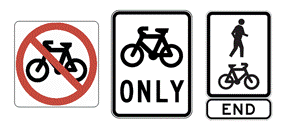
Look out for each other
Shared paths are provided for the use of both bicycle riders and pedestrians (including riders of wheeled recreational devices and wheeled toys). There are some rules to follow and behaviours that will allow bicycle riders and pedestrians to stay safe and share the path.
Bicycle riders on shared paths
When riding on a shared path, the road rules require bicycle riders to:
- Keep to the left (unless it is impractical to do so)
- Give way to pedestrians including wheeled recreational devices/toys. You should always slow down, stopping if necessary to avoid a collision
- Keep to the left of any oncoming bicycle rider.
You can also make paths safer for everyone by:
- Providing pedestrians with a metre of space when passing
- Using your bell to warn others when you are approaching
- If there is room, moving off the path to the left if you wish to stop riding
- Being careful around young children and dogs, as they are often unpredictable in their movements, and older pedestrians who may be more vulnerable
- Travelling at a safe speed so you can stop within a safe distance of pedestrians on the path.
Pedestrians on shared paths
When walking on a shared path, to share the path safely, it is recommended that pedestrians:
- Keep to the left
- If there is room, move off to the path to the left if you wish to stop walking
- Keep animals on short leads and under control
- Be aware of bicycle riders sharing the path - to improve your safety we recommend riders use their bell to let you know they are approaching from the behind. We also recommend you focus on the path ahead when approaching corners.
Wheeled recreational devices on shared paths
A person using a wheeled recreational device or wheeled toy on a shared path is required to:
- Keep to the left (unless it is impractical to do so)
- Give way to all other pedestrians. You should always slow down, stopping if necessary to avoid a collision.
-
Bicycles that meet the requirements for permitted e-bikes can be used on public roads and road-related areas. Petrol-powered bicycles and other powered bicycles that do not meet the e-bike requirements outlined below are illegal and may only be used on private property.
Regulatory amendments occurred in February 2023 to enable the use of higher-powered electrically power-assisted bikes (e-bikes) to increase their permitted wattage to 500 watts (W) where the maximum continuous rated power cuts off when the device reaches a speed of 25km/h
For further information click on E-bikes and petrol-powered bicycles TfNSW
-
From July 2022, electric scooter shared schemes are being trialled in NSW. Riders at trial locations will be allowed to hire and ride electric scooters (e-scooters). The trial is being evaluated and monitored by Transport for NSW.
Personal e-scooters remain illegal on NSW roads and road-related areas, including footpaths, shared paths and bicycle lanes. They can only be used on private property.
Infringements for illegal riding can only be enforced by NSW Police. Riders are expected to always obey the road rules. Reckless behaviour poses risks to the community. The public can report illegal riding behaviour via the Police Assistance Line (PAL) on ph 131 444 which operates 24hrs a day, 7 days a week.
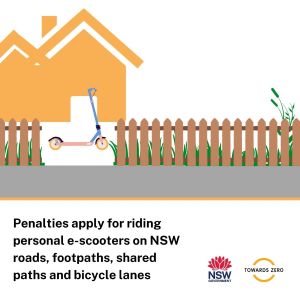
-
A motorised wheelchair user is generally considered to be a pedestrian, and must comply with the NSW Road Rules that apply to pedestrians. To ensure motorised wheelchairs can mix safely with other pedestrians, they must meet the requirements of NSW Road Rules 2014.
Motorised wheelchairs are mobility aids with two or more wheels and have a top speed of 10km/h on level ground. Mobility scooters or 'gophers' are classified as motorised wheelchairs. A motorised wheelchair does not include a wheeled recreational device such as a motor scooter, pram, stroller, trolley or any other motor-assisted machine.
E-skateboards
Reforms to road transport law have been made to enable people with disability to use electric skateboards (e-skateboards) as a motorised mobility device. This change gives those with specific mobility needs greater choice in the type of device they use.
For more information click on motorised wheelchairs or E-skateboards TfNSW
Road Safety at Schools
(Back to top)Changed traffic conditions in First Avenue at Chelmsford Avenue, Epping
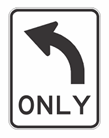
Council is installing an ’All Traffic Left Only 8am-9:30am 2:30pm-4pm School Days’ restriction for southbound motorists in First Avenue at Chelmsford Avenue, Epping as shown in the 1st image below. The 2nd image is a directional guide for motorists.
The purpose of the restriction is to improve traffic flow and reduce congestion without removing on-street parking from First Avenue.
The Traffic Management Plan has been approved by Transport for NSW and the Parramatta Traffic Committee. The signs are expected to be installed the week of 9 June 2025.
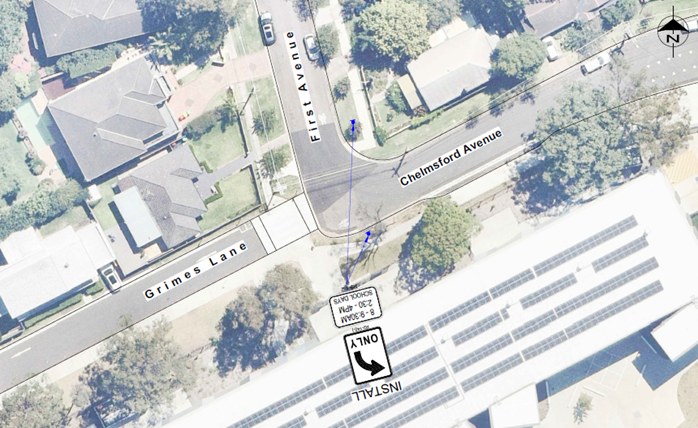
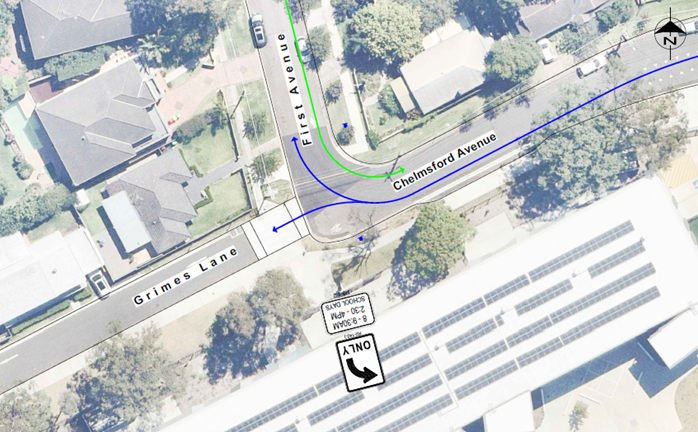
Road safety educational tools available for school communities
City of Parramatta encourages schools and/or their Parents and Citizens Associations (P&Cs) to actively promote road safety within their school community.
Review parking restrictions
Council acknowledges that schools and/or P&Cs are in the best position to represent the interests of parents/students and can consult with their school community (if needed) so that a consensus is established.
Schools can advise Council should they wish to have parking restrictions reviewed around their school.
NSW Road Rules & Parking Guide
Motorists are required to always park and drive legally.
Restrictions increase the safety of all road users including vulnerable pedestrians and accommodate the various needs of residents, school communities and local business.
View Council’s NSW Road Rules & Parking Guide
Top 10 misunderstood road rules in NSW
View TfNSW's Top 10 misunderstood road rules.
Road Safety Education program
The Road Safety Education Program is funded by the Centre for Road Safety in Government and non-Government schools. Road safety is taught in the learning area of Personal Development, Health and Physical Education (PDHPE). All students in NSW study PDHPE from Kindergarten to Year 10.
Road safety education specialists in the Government, Catholic and Independent school sectors provide professional learning and advice to teachers and schools about teaching road safety and how to address road safety issues through the curriculum.
Schools can contact Road Safety Education specialists in their sector for further information.
You can find out more at TfNSW Road safety education - Schools - Staying safe - NSW Centre for Road Safety
School zones
School zones are under the care and control of TfNSW
This includes:
- Installation of new school zones – new school, new direct access point
- Removal of school zone following closure of a school
- Installation of all 40km/h school zone signs, patches and dragon’s teeth markings
- Operating times of 40km/h school zones
- Installation and maintenance of school zone flashing lights
- Traffic signals
- Installation and maintenance of all speed zone signs, including 40km/h school zone signs.
To submit a request in relation to a school zone click here
TfNSW School Crossing Supervisor program
The School Crossing Supervisor program is under the care and control of TfNSW. It is a state-wide program that contributes to the safety of infants and primary school students. School crossing supervisors help students use the crossings on roads adjacent to or nearby schools. School crossing supervisors are provided where Transport for NSW guidelines and criteria are met. An application form must be completed by the School Principal and will investigated by the TfNSW School Crossing Program. Click here for the application form.
‘Road safety – keeping kids safe at your school’ presentation
Council also provides a road safety presentation for parents and carers.
The ‘Road Safety – Keeping Kids Safe at your School’ presentation was developed and is presented by Council’s Regulatory Team to raise awareness of road safety issues around schools.
The presentation is delivered to schools P&Cs and includes a PowerPoint presentation and safety tips, including the explanation of common signs and Road Rules around schools.
The presentation runs for approximately 10 minutes (plus any question time) and provides a framework for discussion about how to increase children’s safety when dropping off and picking up children from school.
It is recommended that all schools within Parramatta’s LGA promote this initiative to their P&C.
Past experience has shown that it is beneficial in improving road safety awareness to parents/carers.
This presentation can be delivered online (preferred method) or in person, following appropriate NSW Heath directions under the Public Health Act.
Book a presentation
To arrange a presentation for your school's P&C, please call Council's Ranger and Parking Services on 9806 5050 to book a suitable time and date.
Child Restraint Fitting/Adjustment Program 2024/2025
(Back to top)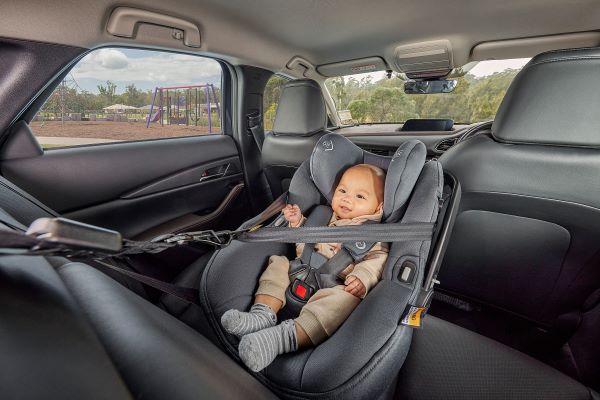
As part of Council’s Local Government Road Safety Program and in partnership with TfNSW, eligible residents can attend a free child restraint fitting/checking event where an authorised fitter will fit or adjust/check your child restraint for free (up to 3 child restraints per one vehicle).
The next child restraint fitting/checking days will be held on
Thursday 1 May 2025 (bookings open 10 April 2025) Bookable
And in support of National Road Safety Week 2025 and in conjunction with Transurban and Kidsafe, an additional fitting/checking event day will also be held on
Wednesday 14 May 2025 (bookings open 2 May 2025) Bookable
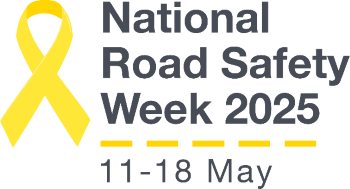
*National Road Safety Week is an annual initiative from the Safer Australian Roads and Highways (SARAH) Group, partnering road safety organisations and Government. The week highlights the impact of road trauma and ways to reduce it. National Road Safety Week
Bookings are essential. Booking terms and conditions apply. Bookings can only be made online via Council’s Bookable system.
Due to funding limitations, bookings are open to residents of the Parramatta Local Government Area only. Current proof of address will need to be shown at the event prior to any works being undertaken.
For any enquires about this event, please contact Council's Road Safety Officer at roadsafety@cityofparramatta.nsw.gov.au or phone 9806 5768.
Should you need to have your child restraint seat fitted or checked, you can search for an Authorised Restraint Fitting Station in the local area. Find an authorised child restraint fitting station | Transport for NSW Please note the cost of using these fitting stations must be covered by the user and is not covered by Council.
You are encouraged to view Home | Child Car Seats - Make the safest choice which provides useful and educational information on choosing a child car seat.
Teaching a Learner Driver?
(Back to top)
Do you know a young adult who has their learner's license, or is getting ready to obtain their learners license?
As part of Council’s Local Government Road Safety Program, Council is hosting a free online workshop for parents and supervisors of learner drivers.
When: Wednesday 2 July 2025
Time: 6pm - 7.15pm
Where: Online Microsoft Teams
Get information and practical advice on a range of topics, including:
- Understanding the current laws for learner and provisional license holders
- How to correctly complete the learner driver log book
- Techniques in supervising learner drivers
- Understanding the benefits of receiving supervised on-road driving experience
- Practical advice on how supervisors of learner drivers can help learners become safe drivers.
You don't need to live within the City of Parramatta area to attend, so don't forget to tell your friends!
Register at Bookable (registrations open 1 May 2025)
Senior Driving Workshop
(Back to top)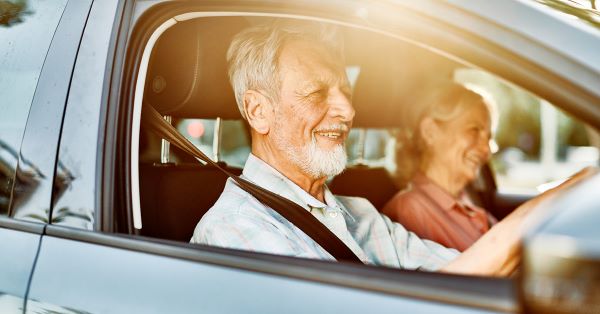
As part of Council's Local Government Road Safety Program, Council holds a FREE workshop for senior drivers.
During this in-person workshop, a Driver Educator with over 20 years formal industry engagement explains
- Low risk driving strategies
- New vehicle technology
- Misunderstood road rules
- What you need to know about renewing your licence after 70 in NSW, including driving and medical assessments, and how to apply for a modified licence.
Light refreshments provided. Attendee numbers are limited. Registrations essential.
MAY 2025 - BOOKED OUT - REGISTRATIONS CLOSED WAITLISTED
When: Wednesday 21 May 2025
Time: 10:00am to 1:20pm
Venue: PHIVE, 5 Parramatta Square, Parramatta
Room: BM.01 Large Meeting Room
AUGUST 2025
When: Wednesday 13 August 2025
Time: 10:00am to 1:20pm
Venue: PHIVE, 5 Parramatta Square, Parramatta
Room: BM.01 Large Meeting Room
Registrations open: 2 July 2025
Register at Bookable
NOVEMBER 2025
When: Wednesday 5 November 2025
Time: 10:00am to 1:20pm
Venue: PHIVE, 5 Parramatta Square, Parramatta
Room: BM.01 Large Meeting Room
Registrations open: 24 September 2025
Register at Bookable
Register online or by phoning Council’s Road Safety Officer, 9806 5768.
This is a popular workshop. If you are unable to attend after you have booked, please cancel your booking so others can attend. Thank you
Basic Car Maintenance workshop
(Back to top)
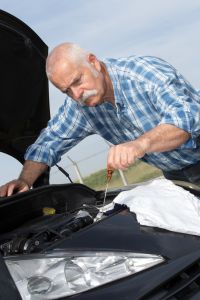
Council is holding a FREE basic car maintenance workshop
As part of Council’s Local Government Road Safety Program, Council is holding a FREE basic car maintenance workshop to help you feel more confident and empowered on the road.
This workshop is open to participants from 16+ years and is being held in the school holidays, so grab a friend or family member and learn new life skills together!
The workshop is run by specialised educator Galmatic, who provides a safe and no judgement zone where basic car maintenance skills are shared including
- Why tyre pressure and tread are important (and how to check both)
- What, when and how to check the engine and keep it running smoothly and safely
- Participants will check oil, coolant, fluids, battery and hoses
- Hands-on experience changing a tyre
All participants must wear suitable covered shoes.
Attendee numbers are limited. Registrations are essential
When: Wednesday 23rd April 2025
Time: 10:30am to 12:30pm
Bookings open: Friday 21 March 2025
Find out more and book at Bookable
For any enquires call Council’s Road Safety Officer, 9806 5768.
First-aid for motorcyclists workshop
(Back to top)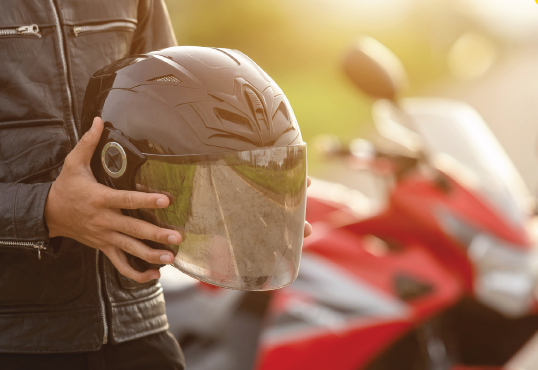
October is Motorcycle Awareness Month
As part of Council's Local Government Road Safety Program, Council will be holding a FREE first-aid for motorcyclists workshop.
When: Saturday 25 October 2025.
Venue: TBA
Spaces are limited. Registrations essential.
Registrations will open in August 2025.
Would you know what to do if you came across a rider down?
This First-aid for Motorcyclists workshop recognizes the unique challenges faced by riders.
This interactive, informative, fast paced training provides skills that enable you to strategize and assist effectively.
You will gain a skill set in motorcycle accident management which is vital for ensuring the safety and well-being of riders on the road. It goes beyond conventional first aid, addressing the specific needs and scenarios encountered by motorcyclists.



